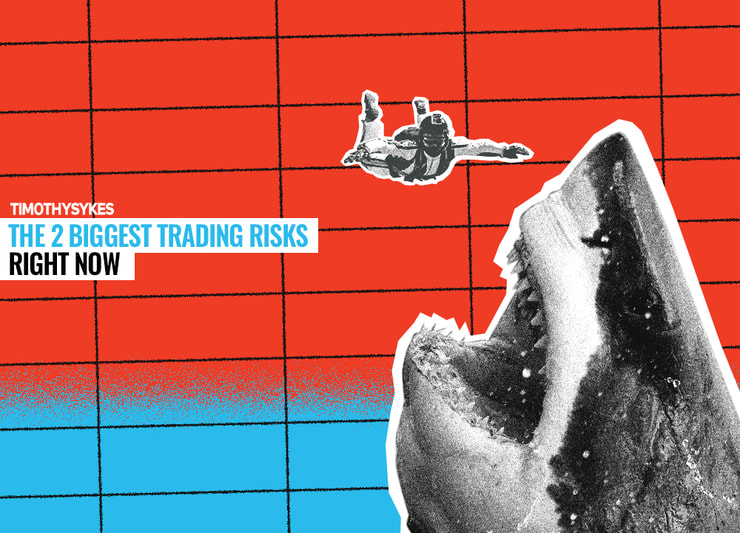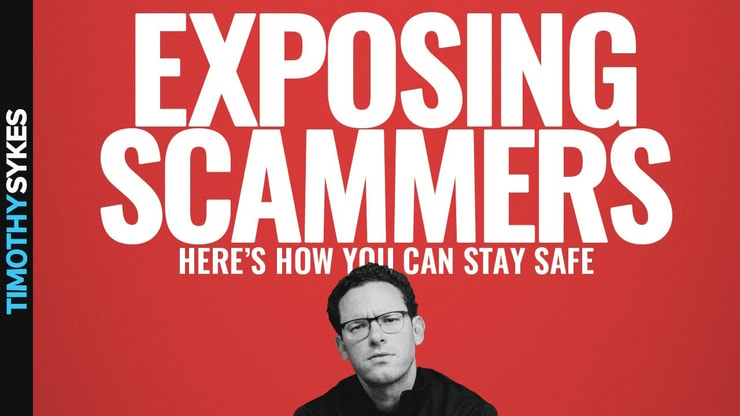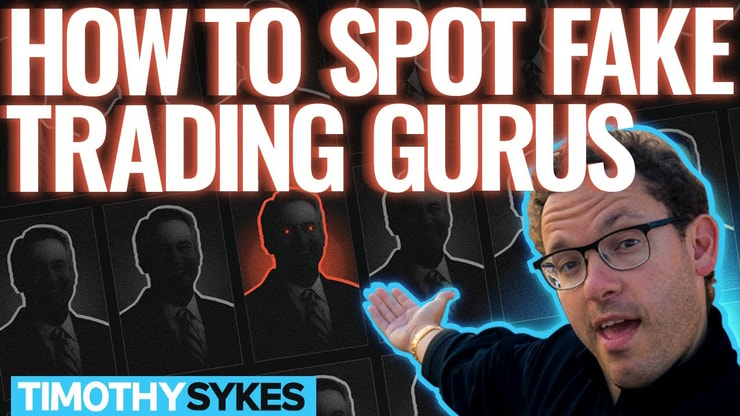Are you losing time and money by taking two of the biggest trading risks in the market right now? Hint: they’re not what you think.
Most traders think the biggest risks in the stock market are things like crashes and losing money on trades. But honestly, those things aren’t as scary as most traders make them out to be.
As I’ve learned from my 20+ years of trading penny stocks, it’s possible to find consistency in any type of market. When the financial crisis of 2007–2008 hit, I was profitable because I adapted my strategy.*
In 2020, I’m up over $931K in profits because I’ve adapted to the volatile market conditions.*
Losing money on trades is always a risk … you’ll never change that. However, you can manage it by being disciplined about cutting your losses. It’s something every trader needs to learn.
The two biggest risks traders face right now aren’t as obvious. Familiarize yourself with them — and know what to look out for and how to stay safe!
(*Please note: My results, along with the results of my top students, are far from typical. Individual results will vary. Most traders lose money. My top students and I have the benefit of many years of hard work and dedication. Trading is inherently risky. Do your due diligence and never risk more than you can afford to lose.)
Table of Contents
Trading Risks to Avoid #1: Scams

There’s a ton of opportunity in the market this year … and smart traders are taking advantage of it.
For instance, take a look at my new student David Martinez. After just two weeks as a student in my Trading Challenge, he decided to make his very first trade — and made over $15K in profits.*
‘Home runs’ like that are far from typical. Singles are far more common. But it does demonstrate the potential in this crazy volatile market.
Unfortunately, scammers also see an opportunity in the current market…
… to take advantage of newbie traders.
Scams come in all shapes and forms in the stock market…
Trading Risks: Imposters
Some scammers are outright pretending to be me (or my top students) and trying to steal money from people like you.
Daily reminder: I have NO other Twitter accounts, look at usernames carefully & see NONE of my impostors are verified for a reason…I will NEVER try to get you to open some shady crypto wallet or ask to manage your money, block and report any impostor who tries that scummy shit!
— Timothy Sykes (@timothysykes) October 9, 2020
I’ll never slide into your DMs and ask for money. Not for an ‘investment opportunity,’ not to tell you about my new options scheme, not for crypto.
Always double-check the account name. I’m @timothysykes on both Instagram and Twitter, and my account is verified on both platforms.
Stay safe! Check out this video for specific tips on how to avoid these imposters:
Trading Risks: Fake Gurus
Other scammers go about their bottom-feeding in sneakier ways. Some are ‘furus’ — aka fake gurus. They love to claim that they’ve got the stock market all figured out.
They call me a dinosaur and say they have an ‘easier’ alternative to my teaching.
Usually, these are the types of traders who only post screenshots of their ‘wins.’ They don’t tell you everything like their position size, entry, exit, and risk…
I’m totally transparent. I tell you everything about every trade.
If anyone tells you trading is easy…
… or that you can get rich quick if you just follow their alerts…
… be very wary.
I want to believe the best in people. I care about people. That’s why I donate so much to charity!
But you can’t put your faith in just anyone in the stock market. There are too many shady people out there.
Not sure if you’ve encountered a fake guru? Here are some tips for identifying them:
More Breaking News
- APLD Stock Rises Amidst Uncertain Market: Is This Momentum Built to Last?
- Unexpected Stock Sale by Director Spell Trouble for Innodata’s Future?
- Is Banco Bradesco SA Stock Set for a Comeback After Financial Upswing?
Trading Risks: Twitter Pumps
Another sneaky scam? Promoters who want to give you free advice. They’ll ‘alert’ you about a stock that they claim is going “to the moon!”
Once again, be wary. They could be (and likely are) pumping up a stock for self-serving reasons.
Do NOT blindly follow alerts. You can look at alerts and learn from them — but don’t trade solely based on them. Always do your own research and trade based on the rules that work for you.
Self-sufficient trading is the only way to go if you want to be in the penny stock game for the long haul.
How to Avoid Trading Scams
Wanna find consistency in the stock market and avoid scammers? Educate yourself. Knowledge is power.
When I started trading, there weren’t really any educational resources for the trading style I was drawn to.
So I created my Trading Challenge to provide the community, education, and mentorship I didn’t have when I was starting out. Are you serious about trading? Consider applying.
If you’re not ready for that level of commitment, there are other ways you can start today. My student Jamil wrapped all the basics of my strategy into a single book that should be on every trader’s desk: “The Complete Penny Stock Course.”
I also have another brand-new program that’s getting rave reviews — my 30-Day Bootcamp.
With this program, you can work at your own pace. So you don’t have to do it in 30 days. Some traders do it in two weeks, others take a few months.
It takes you from the most basic trading concepts to advanced trading techniques. And it’s perfect for beginners but also a good refresher for experienced traders.
These resources are all tremendous lifesavers. Yeah, they cost money, but they give you knowledge that can save you time and money over the long run. And when you invest in something — like your education — you tend to value it more and make the most of it.
Don’t follow the wrong people or try to use trading to get rich quick. Those are trading risks you shouldn’t take.
Trading Risks to Avoid #2: Risking too Much Money
Proud teacher moment: my top students are killing it.*
As of this writing…
- Jack Kellogg just passed $991K in profits.*
- Kyle Williams just passed $534K in profits.*
- Matt Monaco just passed $368K in profits.*
When you see results like this, you might be tempted to adopt a ‘go big or go home’ mentality. You might start thinking, ‘These guys look normal. I can catch up.’
Bad idea. Here’s what you might now know: these guys have dedicated years to refining their strategies.
You’re noticing them now because they have flashy profit charts. But there were long months and years where nobody cared because they were only trading with small accounts.
Be willing to put in the time and effort to get to where they are.
How My Top Students Manage Risk…
All of my top students started in the Trading Challenge. They studied my strategies, but eventually, they adapted them and developed their own unique approach to trading.
But that’s not all they have in common. They’re all smart about cutting losses.
Sure, they’re still human. For instance, Jack Kellogg was off his game for a few weeks and lost about $25K. But he saw it as a wake-up call. He got back on track. And now, he’s recovered all of his losses and then some.*
But in general, none of them take losses of more than a few thousand dollars. Their average losses are more like $300 or $500.
I’m no mathematician, but when your average gain is a few thousand and your average loss is a few hundred … that can add up over time.
A word to the wise? Don’t trade huge positions. Any one trade can be wrong. No matter how good it looks, how much research you’ve done, how much you did right — you could still be wrong.
Using leverage or aggressive short selling … you don’t have to do these things.
And remember no matter how much money you want to make in the markets, NO trade is worth risking losing your entire account over so take positions accordingly with your account size & risk/experience levels. You do NOT have to take big risks/losses to grow your account over time!
— Timothy Sykes (@timothysykes) October 9, 2020
Instead, start small. Take it slow. Remember: big things have small beginnings.
Recognize that any one trade can blow you up. If you remember that, you’ll stay safe.
Avoid These Trading Risks…
Trading is inherently risky. So why make it harder than it has to be?
Following misinformation can cost you time and money. Be very wary of fake gurus and scammers.
And betting too big can seriously burn you. Remember, it only takes a single trade to blow up your entire account.
You’ll never do everything perfectly. If you have a loss, learn from it. I have. Check out my book, “An American Hedge Fund.” In it, I talk about my biggest loss ever. It hurt my confidence for a year or two — but it also crystallized my rules. It snapped me into discipline.
This is why I teach and write blog posts like this. I want to help you cut through the BS and make the stock market less risky and stressful. My goal is to help traders like you realize your full potential and pursue trading without unnecessary obstacles!
Do you understand these two trading risks? How will you stay safe in the market?




Leave a reply